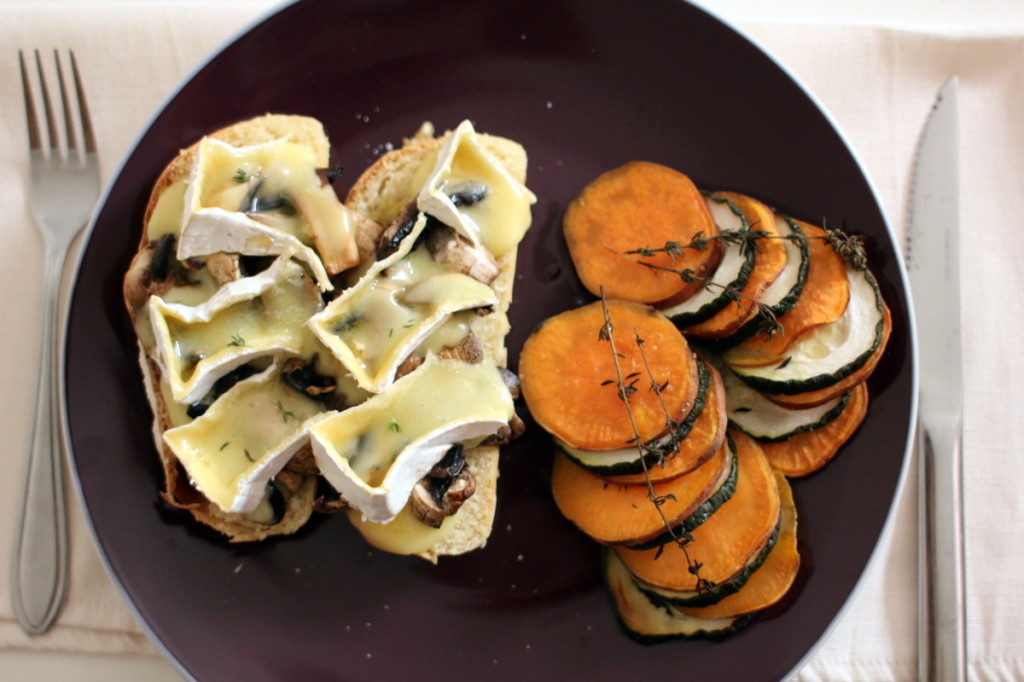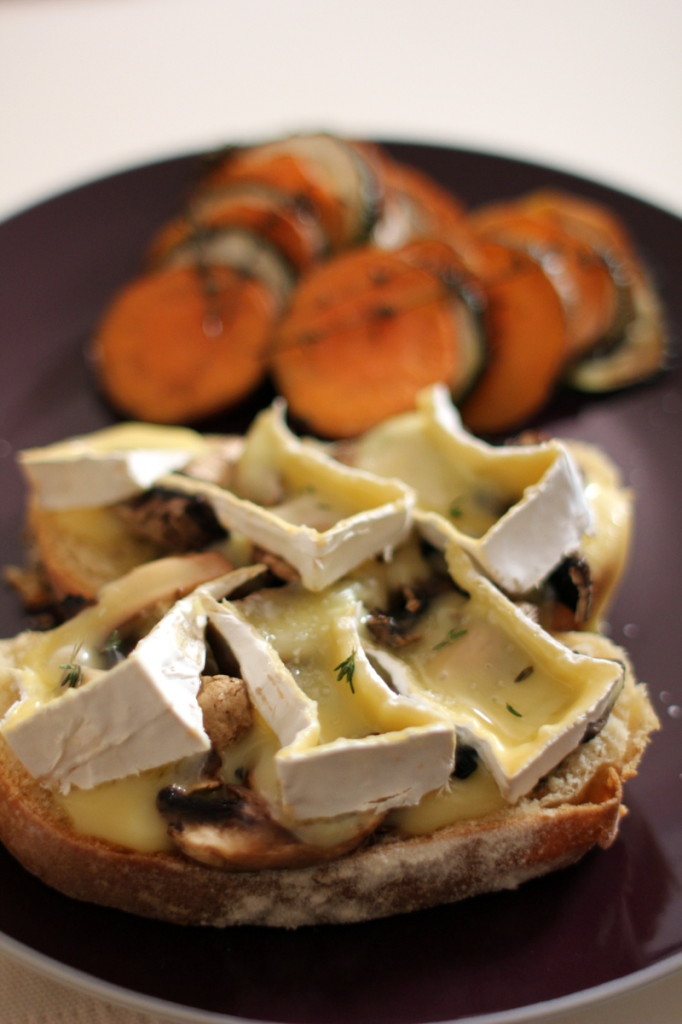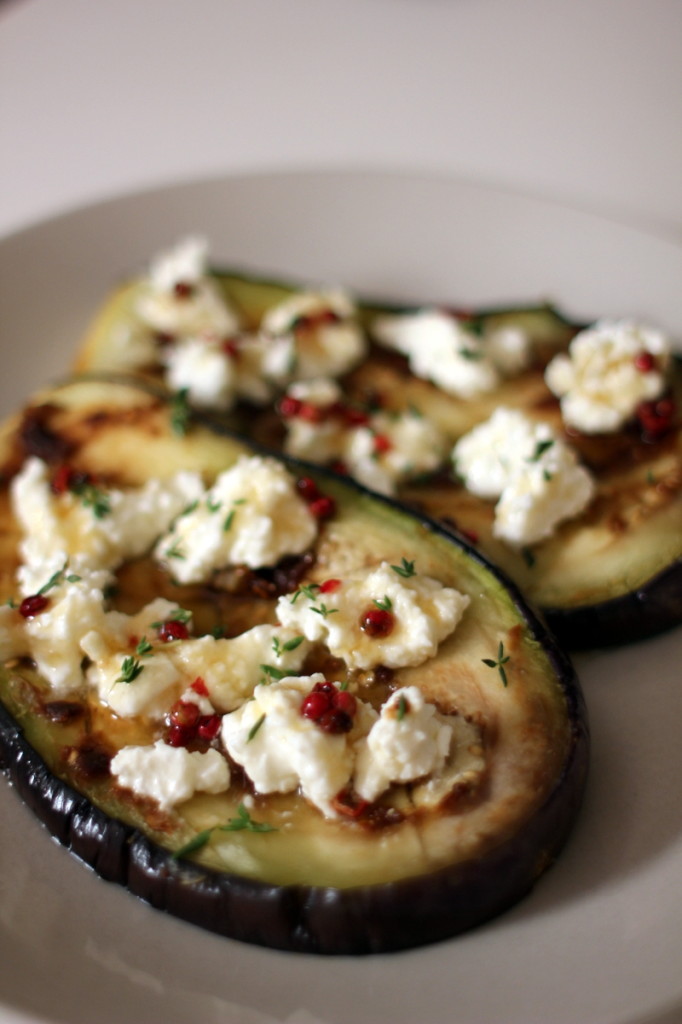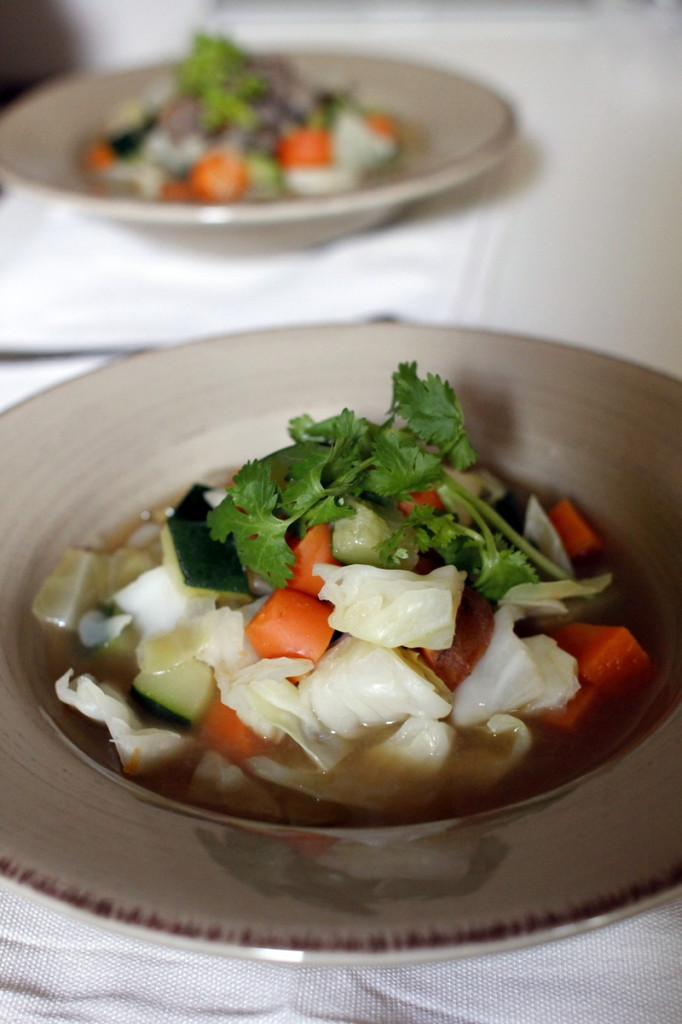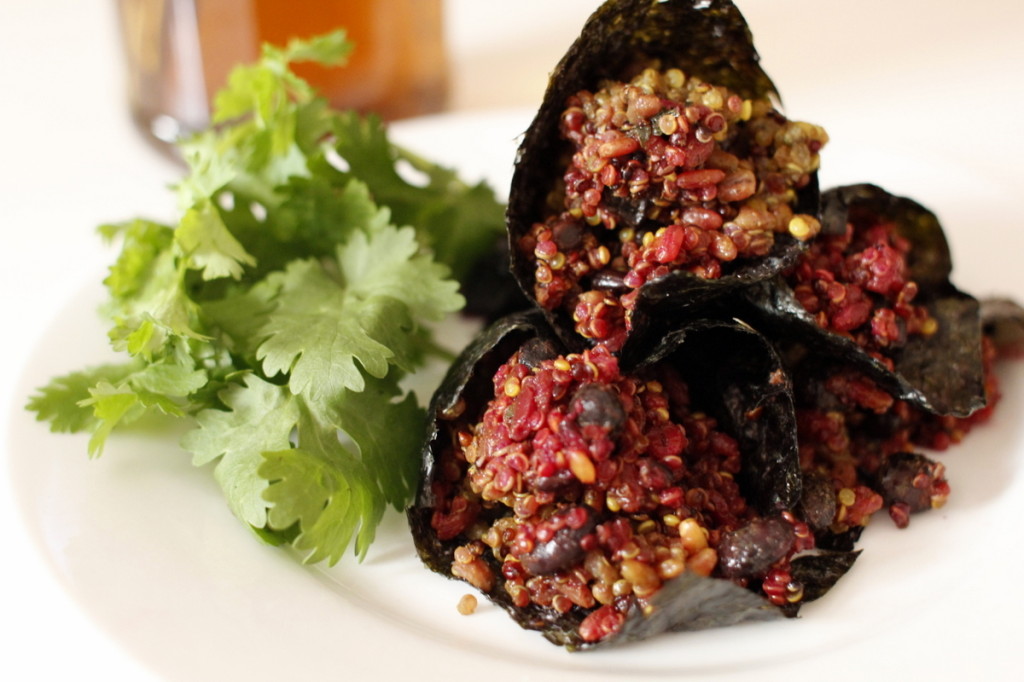This recipe would be nice for a light lunch or brunch on the weekend.
It is so perfect flavour combination – creaminess of brie cheese with wild mushrooms. You can make soup, bisque, pizza, risotto, omelet, pie, canape..endless.. You name it! It will work beautifully. On to the vegetable Tian, it is originated in Provence, the south of France. Tian refers to the baking dish and roasted vegetables – the word explains all. It can be topped with some cheese, but I prefer it simple, fresh and clean taste. These two dishes together on the plate look elegant and tastes so good. Every mouthful has a punch of flavour!
Simply arrange alternating layers of slices of sweet potato and zucchini in the baking dish, and bake in the oven with fresh thyme and e.v.o.o until it’s all cooked. You can add eggplant or tomatoes as well. When it comes out of the oven, colours and presentation looks stunning. I reckon it is definitely a wow factor when you have dinner parties.

